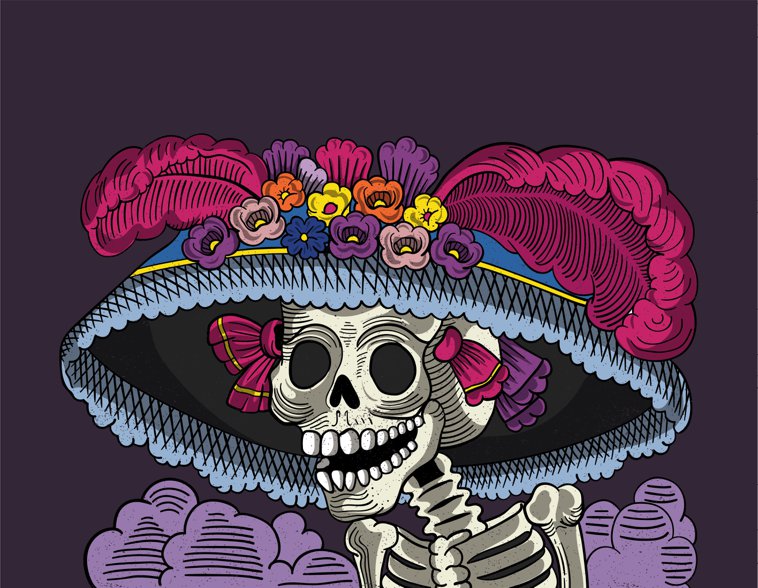Literary "Calaveritas"
A Bit of History
Calaveritas literarias were first published in Mexico in the 1850s and began as mock epitaphs (phrases or poems written in memory of someone who has died) written to poke fun at members of high society.
Nowadays, they are associated with Día de Muertos (Day of the Dead) and are often written from the point of view of La Catrina.
La Catrina is an elegant skeleton lady who is symbolic of both Mexico and the Day of the Dead. First drawn by Mexican lithographer José Guadalupe Posadain the early twentieth century, her status as a beloved symbol of Mexican culture was cemented after Diego Riveraincluded her in his mural Sueño de una tarde dominical en la Alameda Central(Dream of a Sunday Afternoon in Alameda Park).
The tradition of calaveritas literarias predates La Catrina; the first calaveritas appeared in the nineteenth century. Modern-day calaveritas are often posted on social media and can be written about almost anything, including politicians, songs, and movies.
La Catrina

An Example
Let's take a look at a calaverita dedicated to a song that seemed to have eternal life: "Despacito"!
Speaking of Despacito, check out these articles about music in Spanish!














